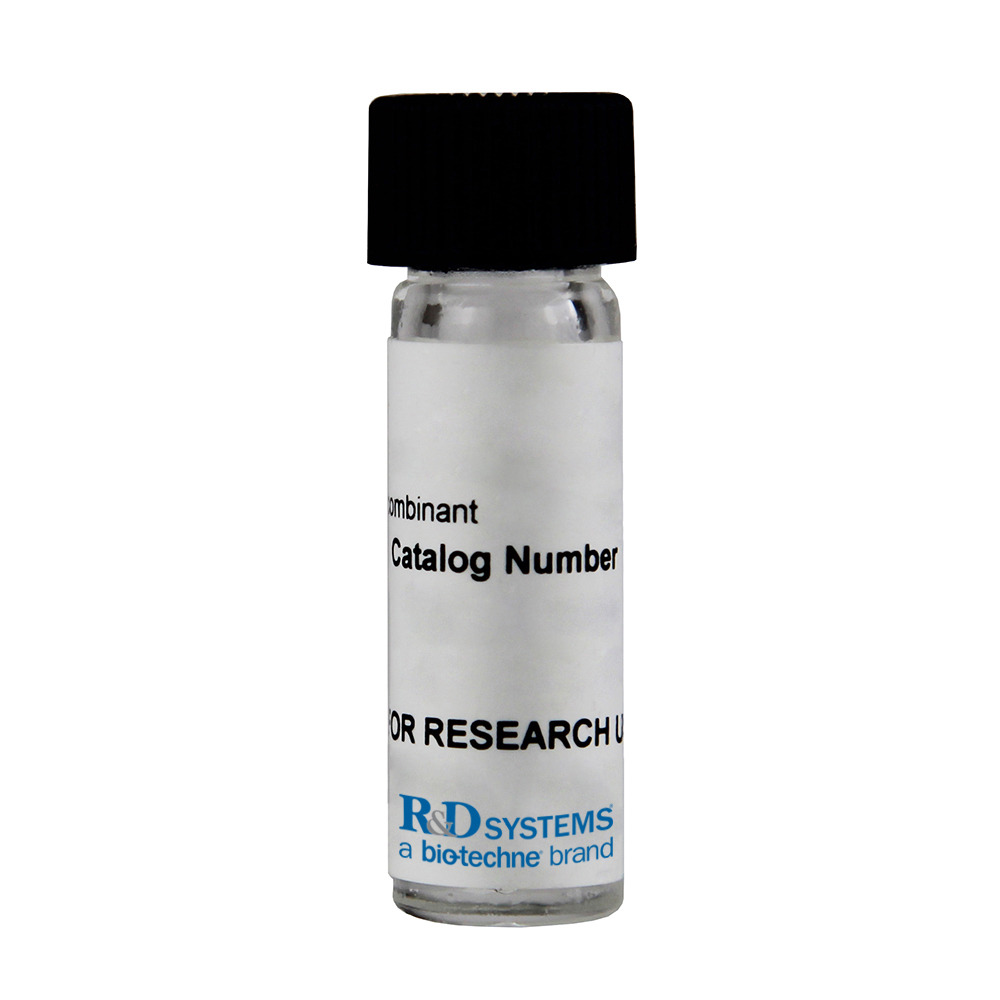Recombinant Human His6-SENP2 Catalytic Domain Protein, CF
R&D Systems, part of Bio-Techne | Catalog # E-710


Key Product Details
Product Specifications
Source
Contains an N-terminal Gly-Ser-Ser and 6-His tag
Purity
Predicted Molecular Mass
Activity
Reviewed Applications
Read 1 review rated 4 using E-710 in the following applications:
Formulation, Preparation and Storage
E-710
| Formulation | X mg/ml (X mM) in 50 mM HEPES pH 8.0, 100 mM NaCl, 10% (v/v) Glycerol, 1 mM TCEP |
| Shipping | The product is shipped with dry ice or equivalent. Upon receipt, store it immediately at the temperature recommended below. |
| Stability & Storage | Use a manual defrost freezer and avoid repeated freeze-thaw cycles.
|
Background: SENP2
SUMO1/Sentrin/SMT3 Specific Peptidase 2 (SENP2) is a member of the SENP family of proteases (1). SENPs are a group of cysteine-type peptidases that catalyze two essential functions in the SUMO pathways: processing of full-length small Ubiquitin-related modifiers (SUMOs) to their mature forms and deconjugation of SUMOs from SUMOylated proteins. SENP2 is 589 amino acids (aa) in length with a predicted molecular weight of 67.9 kDa. Human SENP2 shares 88% and 87% aa sequence identity with the mouse and rat orthologs, respectively. Mammalian SENPs share a conserved C-terminal catalytic domain while the N-terminal domains have no significant similarity (1). The N-terminal domain of SENP2 contains a nuclear localization signal and a CRM1-dependent nuclear export signal allowing SENP2 to shuttle between the nucleus and cytoplasm (2). In the nucleus, SENP2 associates with Nup153, a nucleoporin that is located on the nucleoplasmic side of the nuclear pore complex (3,4). It is thought that SENP2 functions are regulated by its association with the nuclear pore complex and nucleocytoplasmic shuttling (2,3). SENP2 has been shown to deSUMOylate multiple proteins including C/EBP beta, ROR alpha/NR1F1, IRF3, MEF2A, and NEMO (5-10). Consequently, SENP2 is thought to be critical for the regulation of various cellular processes such as adipogenesis, immune responses, and cancer cell growth (6-8,10). Additionally, SENP2 deSUMOylates MDM2, allowing MDM2 to bind and ubiquitinate p53 (11,12). SENP2-mediated regulation of MDM2 appears to be critical for the development of the trophoblast during embryogenesis and maintenance of the genome during stress responses (11,12).
This recombinant human protein encompasses the catalytic domain of SENP2 (aa 368-589) and contains an N-terminal His6-tag.
References
- Nishida, T. et al. (2001) J. Biol. Chem. 276:39060.
- Itahana, Y. et al. (2006) Mol. Cell. Biol. 26:4675.
- Hang, J. & M. Dasso (2002) J. Biol. Chem. 277:19961.
- Chow, K.H. et al. (2012) Nucleus 3:349.
- Hwang, E.J. et al. (2009) Biochem. Biophys. Res. Commun. 378:513.
- Chung, S.S. et al. (2010) Mol. Cell. Biol. 30:2135.
- Lee, M.H. et al. (2011) Mol. Cell 43:180.
- Ran, Y. et al. (2011) J. Mol. Cell Biol. 3:283.
- Lu, H. et al. (2012) Mol. Biol. Rep. [Epub ahead of print]
- Shen, H.J. et al. (2012) Asian Pac. J. Cancer Prev. 13:3583.
- Chiu, S.Y. et al. (2008) PLoS Biol. 6:e310.
- Jiang, M. et al. (2011) Cell Death Differ. 18:1005.
Long Name
Alternate Names
Gene Symbol
UniProt
Additional SENP2 Products
Product Documents for Recombinant Human His6-SENP2 Catalytic Domain Protein, CF
Product Specific Notices for Recombinant Human His6-SENP2 Catalytic Domain Protein, CF
For research use only